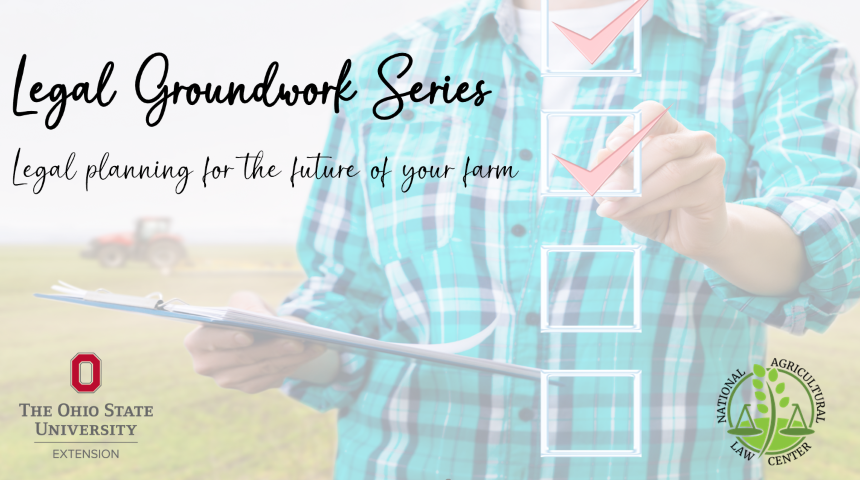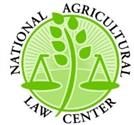
In the last post, we looked at strategies to deal with second marriages using trusts. In this post, we look at the risks of divorce on the farm transition plan and strategies to minimize the risk.
Marital Versus Separate Assets
To address the issue of divorce, it is first helpful to know what assets are subject to a divorce. According to Ohio law, marital assets are to be divided “equitably” in the event of a divorce. Equitable does not necessarily mean equal although an equal division of marital assets between the spouses is often the result. Divorces can be especially threatening to farmland because of the “land rich, cash poor” dilemma for farmers. In a farm divorce, it is usually not equitable for one spouse to receive all the farm assets if there are not sufficient non-farm assets for the other spouse. Thus, both spouses may receive farmland in the divorce settlement. Once the farmland is divided, either spouse can sell or transfer the land out of the family.
It is important to note that Ohio law only requires “marital” assets to be divided. Non-marital assets, referred to as “separate” assets, are retained by the spouse who brought the assets to the marriage. Understanding the difference between a separate asset and a marital asset is critical when attempting to mitigate the risks of divorce.
Separate assets include the following:
- Property acquired by a spouse prior to the date of the marriage.
- Passive income and appreciation from separate property received by a spouse during the marriage.
- An inheritance received by a spouse during the marriage.
- A gift received by a spouse during the marriage.
The above list would seem to make it an easy exercise to determine which assets are marital and which are separate in a divorce situation. However, like many legal issues, the application of the concept is more complicated than it may appear. This is because Ohio law also provides that income or appreciation on separate property can become a marital asset.
Ohio law includes as marital property:
“… all income and appreciation on separate property, due to the labor, monetary, or in-kind contribution of either or both of the spouses that occurred during the marriage. ”
So, it is possible for an asset to be partially separate (the initial property) and partially marital (the income and appreciation on the property).
Consider the following example:
Andy and Beth are farmers in the process of divorcing. Shortly after they were married, Beth inherited a 100-acre farm from her grandmother. When she inherited the farm, it was valued at $600,000. A few years after inheriting the farm, Andy and Beth’s farming operation paid for and installed $80,000 of drainage tile on the farm. The current value of the farm is $1 million.
In this example, the farm was Beth’s separate asset upon inheritance. However, the tile that improved the quality and value of the farm was a result of Andy and Beth’s joint farming operation. Andy likely has a valid claim that at least part of the $400,000 increase in value is a marital asset due to the tile installation.
Perhaps Andy further argues that most of the increase in value was due to fertilizer, tillage and other soil improvements made while Andy and Beth farmed the land. It is in Andy’s interest to make the $400,000 increase in value a marital asset. Conversely, Beth could argue that the increase was not a result of the marital farming operation but was merely a passive value increase due to market pressure. It is in Beth’s interest to argue the $400,000 increase as her separate asset.
As this example illustrates, an asset that is initially a separate asset can become, at least in part, a marital asset. Both Andy and Beth have valid arguments. It is not hard to imagine how much time and legal fees could be spent resolving or litigating the issue in a contentious divorce.
Co-mingling assets can also cause a separate asset to become a marital asset. If the spouse owning the asset voluntarily allows the other spouse to become an owner of the asset, it is likely to become a marital asset. Using the example above, after Beth receives the farm, she adds Andy’s name to the deed as co-tenant. Because she voluntarily added Andy to the deed and gave him half ownership, Beth has likely changed the property from a separate to a marital asset.
Another example might be as follows:
Beth receives a $100,000 inheritance from her grandmother. Beth deposits the money in a bank account owned by both her and Andy.
By co-mingling the inherited money with other money owned jointly with Andy, Beth has probably made the $100,000 inheritance a marital asset. If Beth would have deposited the money in an account owned only by her, the inheritance would have remained a separate asset. While co-mingling does not automatically make an asset become marital property, the spouse owning the asset should avoid co-mingling if wanting to keep the asset separate.
Assets acquired during a marriage will almost always be considered marital property. This is true even if one spouse provided little or no contribution towards the acquisition of the asset. Ohio law considers marriage to be a partnership regardless of the contribution of the spouses. For example, farmland purchased during the marriage will be a marital asset even if only one spouse operates the farm and the other spouse is not involved with the farmland or farming operation.
Prenuptial and Postnuptial Agreements
A prenuptial agreement can help alleviate the issues with marital assets. This type of agreement entered into prior to marriage designates what assets each person is bringing to the marriage, what assets will be separate, and what assets will be marital. Especially for people who have accumulated some wealth prior to marriage, a prenuptial agreement is a good option to avoid future disputes regarding the nature of assets in a marriage and potential risks to farmland.
To be valid and enforceable, a prenuptial agreement should:
- Be in writing and signed by the parties;
- Be prepared, reviewed and executed long before the marriage;
- Provide each spouse’s assets, including values;
- Be reviewed by separate attorneys representing each spouse.
Prenuptial agreements can become outdated, especially when marriages last many years. A married couple who enters into a prenuptial agreement when they are 25 may have very different assets and goals when they are 65. Until recently, married couples in Ohio were stuck with their prenuptial agreement regardless of how unfair or obsolete the agreement had become. Recently, legislation was adopted to allow for postnuptial agreements.
A postnuptial agreement is similar to a prenuptial agreement in that it identifies which assets are to remain outside of the marriage and what assets are considered joint, marital assets. A postnuptial agreement is signed sometime after marriage begins. There are no term requirements for a postnuptial agreement – it can be entered into shortly after marriage or many years after marriage.
For a prenuptial agreement to be terminated or amended or for a postnuptial agreement to valid, the law requires the following:
- The agreement be in writing and signed by both spouses,
- The agreement is entered into freely without fraud, duress, coercion or overreaching,
- There was full disclosure, or full knowledge, and understanding of the nature, value and extent of the property of both spouses,
- The terms do not promote or encourage divorce or profiteering from divorce.
For people who are considering getting remarried or for those that are already remarried, a prenuptial or postnuptial agreement should be considered. These agreements can establish how assets are to be divided in the event of a divorce and perhaps relieve some worries regarding farm transition planning. Prenuptial and postnuptial agreements should be drafted in consultation with an attorney.
For more information on farm transition strategies to address second marriage issues, see the new bulletin FARM TRANSITION PLANNING STRATEGIES FOR SECOND MARRIAGES available at farmoffice.osu.edu.






